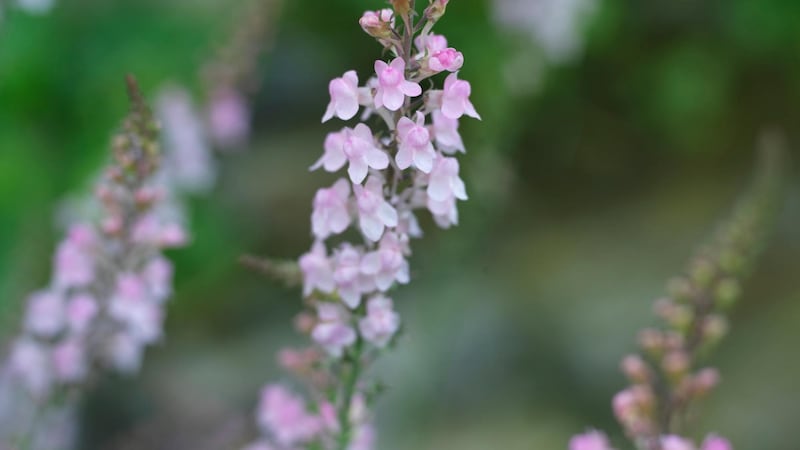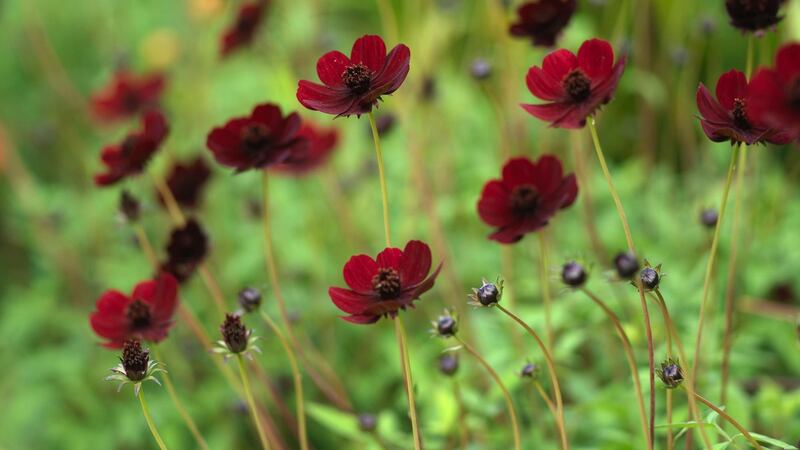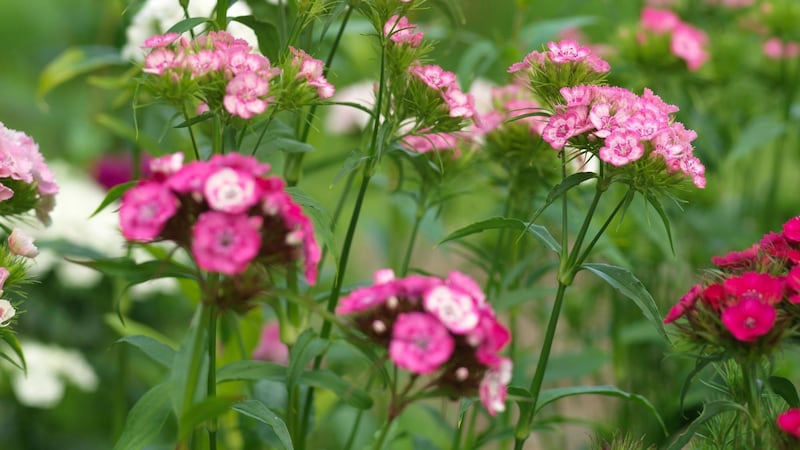If you’re a greedy gardener like I am, then few things can equal the magic of propagating new plants from seed. It’s the conjuror’s trick that I never tire of, the horticultural equivalent of “the loaves and the fishes” that never ceases to delight.

But it’s not simply the fact that it gives me a multitude of plants for little more than the price of a takeaway coffee that makes the process so enthralling. It’s also the innumerable possibilities that it affords in terms of seeking out the very best, most garden-worthy varieties or the latest plant introductions. Another advantage is that it enables gardeners to weave really generous quantities of a particular variety through the garden. The result is repetition in a good way; take a careful look at the most beautiful flower borders and you’ll discover that this is a vital ingredient of their success.

Both pretty and elegant, the late spring-flowering perennial commonly known as columbine or granny's bonnet is just one example of the many wonderful, wildlife-friendly border plants that Irish gardeners can easily raise from seed at this time of year (look out for seed of named varieties such Aquilegia 'Hensol Harebell' and its equally charming relative, Aquilegia 'Lime Sorbet'). Others include lupins, which are available in a wide range of colours; and toadflax, an elegant summer-flowering perennial with tall, slender spires of flowers that are charming in a mixed border or when used in a flower arrangement. While those of the species (Linaria purpurea) are violet-blue, there are white (Linaria purpurea 'Alba') and shell-pink (Linaria 'Canon Went') forms. All varieties are loved by butterflies and other pollinating insects.
Another must-have summer flowering perennial – albeit on the tender side – is the brand-new variety of chocolate cosmos known as Cosmos atrosanguineus 'Black Magic'. Up until very recently this sun-loving species, whose tall, maroon-coloured, daisy-shaped summer flowers carry the distinctive whiff of dark chocolate, was believed to be sterile, meaning it could only be propagated vegetatively (in other words, only by cuttings or division of its fleshy, dahlia-like tubers), making it expensive to buy as well as slow to bulk up in the garden. But then along came a wonderful horticultural breakthrough in the shape of a plant growing in a private New Zealand garden that successfully produced seed. The happy result is that gardeners can now source chocolate cosmos seed from a limited number of specialist online suppliers including UK-based Chiltern Seeds (chilternseeds.co.uk). Definitely one for those who love the idea of their garden smelling like Willy Wonka's 'Land of Candy'.

Hardworking plants
Also on my summer 2017 wish-list is the seed of a host of late spring and summer-flowering biennials. Sown over the next few weeks for transplanting into their final position in the garden in early autumn, these hardworking short-lived plants will flower next summer. Examples include sweet William (Dianthus), Canterbury Bells in shades of white, pink and blue (Campanula medium), honesty (Lunaria), sweet rocket (Hesperis) and foxgloves (Digitalis), all of which look right at home in a cottage-garden style border as well as cut blooms in a vase. A host of new garden-worthy varieties of these old favourites have been bred for specific flower colours or the fact that they're longer-flowering, longer-lived or more floriferous. Examples include Dianthus 'Electron' (an exceptionally tall, strong, long flowering, long-lived variety) and Digitalis 'Dalmatian Series' (very floriferous and early to flower). Others (for example, the peachy-hued Digitalis 'Sutton's Apricot') are classics that have stood the test of time.
If you're new to the world of seed-sowing, then the process of raising plants in this way may seem a little intimidating, but it's actually quite straightforward as long as you follow some basic rules. The first is to source seed from a reputable supplier so that it's as fresh and viable as can be. Recommended seed suppliers include most good Irish garden centres as well as seedaholic.com, mrmiddleton.com and chilternseeds.com.

The second is to sow into a really good-quality seed compost, or if sowing outdoors into a seed bed, to make sure that the latter is far from the competing root systems and shade cast by other plants, weed-free and raked to a fine, crumbly tilth. Third, make sure to sow into moist soil or compost. Fourth, follow the instructions on the packet as regards sowing to the recommended depth and spacing of the particular variety (classic mistakes include sowing too deeply and too thickly). Fifth, water very gently or place in a shallow tray of water after sowing (too heavily, and you risk washing away tiny seeds). Sixth, keep the soil or compost damp but not sodden. Seventh, protect emerging seedlings from slugs. Eighth, keep young seedlings regularly watered (but don’t drown them). If you’re sowing into a seed bed outdoors, thin emerging seedlings to allow them space to develop. I prefer to sow seed into 2-3 litre plastic pots filled with damp seed compost, carefully labelled (date, variety, supplier) and then covered with a temporary freezer-bag “lid” that guarantees good levels of humidity (ideal for germination) and prevents the compost from drying out. Once young seedlings have emerged, I remove this. Once seedlings produce their first set of “true” leaves, I then carefully prick them out into plastic cell trays (available in most garden centres) filled with seed compost to transplant into their final positions in pots or the ground come autumn. And hey presto, I have a hoard of gorgeous garden plants. So much more satisfying than pulling sleepy white rabbits out of an old top hat.
This Week in the Garden
Foxgloves are one of the joys of the early summer garden, with tall colourful flower spires that look wonderful combined with a host of plants including roses, catmint and alchemilla mollis. To prolong their display, make sure to deadhead any faded flowers, but allow the last of their flowers to set seed to ensure plenty of new plants next year. While these won't necessarily be exactly true to type I in terms of the parent plant's flower colour and height, they'll still be gorgeous.
After the mild winter and recent damp weather, slugs are a serious problem for many gardeners, causing extensive damage to young seedlings as well as to more established plants. While it may sound a little gruesome, the most effective, organically friendly method of control is to venture out into the garden or allotment in the twilight hours, torch in one hand and a sharp pair of scissors in the other. Examine cherished plants and seedlings closely for emerging slugs and slice them in half for the birds to eat the following morning. Where slug damage is very bad, try placing a length of black plastic or wooden boards on the ground and check underneath the following morning for slugs. They love to hide in dark, cool spots like these during the day. While not as effective, organically acceptable slug pellets containing the active ingredient known as Ferrous phosphate also offer a good degree of control (these are available from most good garden centres) but avoid the use of metaldehyde-based pellets, which are poisonous for garden wildlife as well as domestic pets.
Dates For Your Diary
Wednesday, June 14th, 3pm: Visitor Centre, National Botanic Gardens, Glasnevin, Dublin 9, Greta's Herbs, an afternoon lecture on the cultivation and use of culinary herbs by Dingle-based herb expert and nursery owner Greta McCarthy O'Brien in celebration of the launch of her recently published book of the same name. Also in the same venue on Saturday, June 17th (2.30pm, €5 admission charge), The Bush Telegraph: Do Plants Communicate?, a look at the most up-to-date research on this fascinating subject including topics such as the "wood-wide web" and some plants' ability to "eavesdrop".












